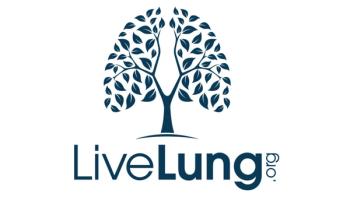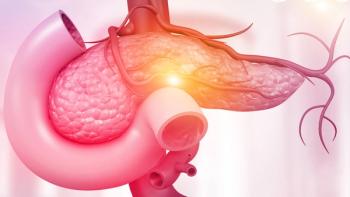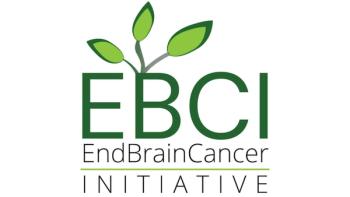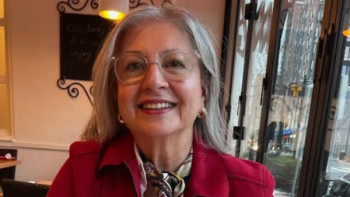
MRD Negativity May Be Achievable With Revumenib in Some Leukemia Subset
Children and adults with relapsed/refractory KMT2A rearranged acute leukemia may obtain promising response rates with revumenib, a novel targeted therapy.
Patients with relapsed or refractory KMT2A rearranged acute leukemia obtained durable minimal residual disease (MRD)-negative remission rates as a result of treatment with revumenib, as demonstrated by recent study findings.
Results from the phase 2 AUGMENT-101 study were presented at the
Of note, KMT2A rearranged acute leukemia involves genetic changes in the KMT2A gene, which plays a role in controlling cell growth. Rearrangement of this gene can result in uncontrolled cell division and the development of leukemia.
Additionally, a high proportion of patients on the trial were able to continue to transplant, which, according to Dr. Ibrahim Aldoss, is the goal of treatment in this setting.
“After achieving a response, 40% of responders were able to go on to allogeneic stem cell transplant, which is usually our ultimate goal for someone with relapsed/refractory leukemia,” Aldoss, who is a hematology oncologist at the City of Hope Comprehensive Cancer Center, explained in the presentation. “Half of the patients were able to continue revumenib as a maintenance therapy after the transplant.”
Further, investigators concluded that the safety profile is promising because the rate of side effect-related discontinuations and dose reductions were low. The rate of treatment-emergent side-effect-related discontinuation was 6%.
Key Efficacy Data
At a median follow-up of 6.1 months, the rate of overall response (patients who responded to treatment, including a partial or complete response) in the efficacy population (57 patients), was 63% (36 patients). This included a 23% complete remission (disappearance of all signs of cancer from treatment), complete remission with partial hematologic recovery (when certain levels of blood cells return to normal) rate and a 44% composite complete remission rate. The median duration of remission was six months.
Regarding best response, 10 patients achieved a complete remission (18%), three achieved a complete remission with partial hematologic recovery (5%), one achieved a complete remission with incomplete hematologic recovery (1.8%) and 11 achieved a complete remission with incomplete platelet recovery (19%). Ten patients reached a morphologic leukemia-free state (18%) and one patient achieved a partial response (1.8%).
Among those with negative MRD status, the complete remission and complete remission with partial hematologic recovery rate was 70% (seven out of 10 patients) and the composite complete remission rate was 68% (15 out of 22 patients).
The efficacy population included patients who had a confirmed KMT2A rearrangement and who remainedin follow-up for the prespecified amount of time.Of note, Aldoss also presented findings from a “safety population,” which included all patients who received at least one dose of revumenib, regardless of whether they had their KMT2A rearrangement confirmed and regardless of follow-up in the trial.
In the efficacy population, 86% of patients had acute myeloid leukemia (AML) and 12% had acute lymphoblastic leukemia (ALL), and 2% had mixed-phenotype acute leukemia or another subtype. The most common co-mutation was RAS (16%), followed by FLT3 (9%), and p53 (7%). A quarter (25%) of these patients had primary refractory disease, and the median number of prior treatment lines was two.
Most patients (72%) had previously received Venclexta (venetoclax), and nearly half (46%) had undergone prior hematopoietic stem cell transplantation (HSCT; a procedure that administers healthy stem cells to help produce new blood cells).
“These are heavily pretreated patients,” Aldoss underscored. “Close to half of these patients had at least three or more prior lines of therapy, and almost half of the patient had prior allogeneic stem cell transplant.”
The median age in the efficacy population was 34 years; 13 patients (22.8%) were under the age of 18 and 44 (77.2%) were 18 or older.
Safety Data
Any-severity nausea (44.7%), febrile neutropenia (38.3%), diarrhea (35.1%) and vomiting (30.9%), were the most common treatment-emergent side effects reported in the trial. Other treatment-emergent side effects, of any severity, that occurred in at least 25% of patients were differentiation syndrome (a large, rapid release of cytokines from leukemia cells that may be impacted by anticancer drugs; 27.7%), low potassium levels (27.7%), nosebleed (26.6%) and irregular heart rhythm (25.5%).
In terms of severe or worse treatment-emergent side effects, the most commonly reported ones were febrile neutropenia (fever and low neutrophil levels in blood; 37.2%), anemia (18.1%), decreased neutrophil count (a type of white blood cell; 16%), decreased white blood cell count (16%), and decreased platelet count (a piece of cell that helps with blood clotting; 14.9%).
Other severe or worse treatment-emergent side effects, occurring in at least 10% of patients, included differentiation syndrome (16%), irregular heart rhythm (13.8%), sepsis (an extreme immune response potentially leading to organ failure, tissue damage or death; 11.7%) and hypokalemia (10.6%).
Of note, there were no instances of treatment discontinuation related to differentiation syndrome, irregular heart rhythm or cytopenias (lower than normal number of blood cells).
Similar to the efficacy population, 83% of patients in the safety population had AML and 15% had ALL, while 2% had mixed-phenotype acute leukemia or another subtype. The most common co-mutation was RAS (13%), followed by FLT3 (7%), and p53 (5%).
A fifth (19%) of patients had primary refractory disease, and the median number of prior treatment lines was 2 (range, 1-11). Most patients (65%) had already received Venclexta and half (50%) had undergone prior HSCT.
The median age in this cohort was 37 years; 23 patients were pediatric (24.5%) and 71 were adults (75.5%).
Findings in Context
There are currently no approved targeted therapies for patients with KMT2A rearrangements despite it being prevalent in up to 10% of acute leukemias.
Following chemotherapy and HSCT, most patients will relapse, and the rate of remission following relapse is low (complete remission, 5%), as is the median overall survival (2.4 months) in adults. The outcomes associated with infants and children after relapse also remain poor.
“It's a disease with unmet therapeutic need,” Aldoss said. “These patients have (a) high risk of relapse after transplant and after chemotherapy and, in adults, remission rates after relapse — and median overall survival when the patients reach second salvage therapy or beyond — remain low.”
For more news on cancer updates, research and education, don’t forget to





